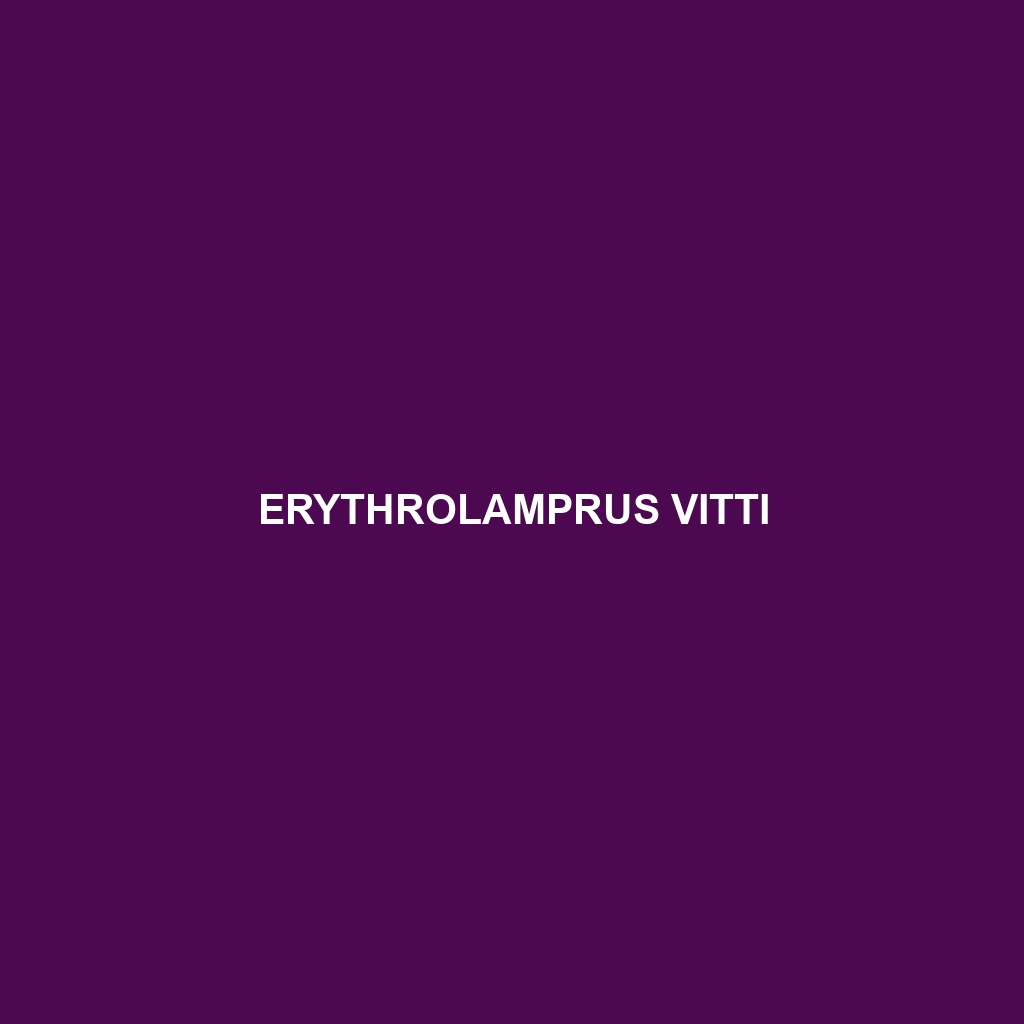Common Name
Erythrolamprus vitti
Scientific Name
Erythrolamprus vitti
Habitat
Erythrolamprus vitti is primarily found in tropical and subtropical regions of Central and South America. This snake species thrives in diverse environments, favoring humid rainforests and tropical savannas, where they can find plenty of cover and food sources. They are often spotted near freshwater bodies such as rivers and streams, where the foliage provides refuge from predators. The preference for these habitats is due to the warm temperatures and the ample vegetation that supports their diet and lifestyle. Erythrolamprus vitti is also adaptable to disturbed habitats, making them versatile in their survival. They are more commonly seen in regions with a climate characterized by high humidity and significant rainfall, conditions typical of rainforests.
Physical Characteristics
Erythrolamprus vitti showcases fascinating physical traits. Adults typically reach lengths of 60 to 90 centimeters (about 24 to 35 inches), making them a medium-sized snake. The scale texture is smooth, with a vibrant coloration that varies from shades of green to brown, often with dark bands or spots for camouflage against the forest floor. One distinctive feature of this species is its elongated body and narrow head, which allows it to navigate through dense foliage effortlessly. Their eyes are relatively large, providing excellent vision that aids in hunting and evading predators. The coloration and physical build of Erythrolamprus vitti play a crucial role in its survival, providing both camouflage and agility.
Behavior
Behaviorally, Erythrolamprus vitti exhibits a variety of intriguing traits that have caught the attention of researchers and enthusiasts alike. This species is primarily nocturnal, becoming most active during the warmer, humid nights. During the day, they prefer to hide under rocks or leaf litter, and they are known for their agility in climbing as well as their ability to swim. Mating rituals typically occur during the rainy season, where males engage in competitive displays to attract females. The courtship involves intricate movements where males will often intertwine with females, showcasing their strength and vitality. Erythrolamprus vitti is also characterized by its solitary nature, generally preferring to hunt and live alone except during the breeding season.
Diet
The diet of Erythrolamprus vitti is primarily carnivorous, consisting mainly of small vertebrates such as rodents, lizards, and amphibians. Fascinatingly, they are also known to consume other snakes, demonstrating their opportunistic feeding habits. Their hunting technique involves ambushing prey rather than active pursuit, leveraging their camouflage to avoid detection. The snake’s dietary adaptability allows it to thrive in various habitats, ensuring that they remain resilient despite environmental changes.
Reproduction
The reproductive cycle of Erythrolamprus vitti takes place during the rainy season, which coincides with ideal conditions for offspring survival. Females lay around 5 to 15 eggs per clutch, typically in hidden nests within the underbrush. The gestation period lasts approximately 60 to 90 days, after which juvenile snakes emerge fully formed and ready to fend for themselves. Unlike many species, parental behaviors are minimal after the eggs are laid, as the young are precocial and possess the skills necessary for survival immediately upon hatching. This reproductive strategy ensures a higher likelihood of survival despite threats from predators.
Conservation Status
Currently, Erythrolamprus vitti is classified as a species of Least Concern on the IUCN Red List. However, ongoing habitat loss due to deforestation and urbanization poses significant threats to their populations. Conservation efforts are crucial to protect their natural habitats from destruction and ensure sustainable ecosystems where these snakes can thrive. Localized studies are needed to monitor populations, and educational outreach can promote awareness and protection efforts.
Interesting Facts
One fascinating aspect of Erythrolamprus vitti is its remarkable adaptability to various environments while maintaining a consistent diet and behavioral habits. Researchers have noted that its striking coloration can change slightly in response to the temperature and humidity of its surroundings. Furthermore, unlike many other snakes, Erythrolamprus vitti exhibits minimal aggression towards humans unless provoked, making it a less risky encounter for individuals exploring its habitat.
Role in Ecosystem
Erythrolamprus vitti serves a vital role in its ecosystem as both predator and prey. By preying on small mammals and amphibians, it helps maintain the balance of these populations, contributing to overall ecological health. As a food source for larger predators such as birds of prey and larger snakes, Erythrolamprus vitti is an integral part of the food web. Their role as a predator also helps control insect populations by indirectly limiting the availability of food sources for various pests. This dynamic interaction emphasizes the importance of preserving habitats to maintain biodiversity and ecosystem resilience.
